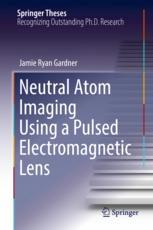

Most ebook files are in PDF format, so you can easily read them using various software such as Foxit Reader or directly on the Google Chrome browser.
Some ebook files are released by publishers in other formats such as .awz, .mobi, .epub, .fb2, etc. You may need to install specific software to read these formats on mobile/PC, such as Calibre.
Please read the tutorial at this link: https://ebookbell.com/faq
We offer FREE conversion to the popular formats you request; however, this may take some time. Therefore, right after payment, please email us, and we will try to provide the service as quickly as possible.
For some exceptional file formats or broken links (if any), please refrain from opening any disputes. Instead, email us first, and we will try to assist within a maximum of 6 hours.
EbookBell Team

5.0
88 reviewsThis book describes the design, construction, and characterization of a new type of aberration-corrected, neutral-atom lens. Atom beam control plays a crucial role in many different fields, ranging from fundamental physics research and materials science to applied nanotechnology. Despite this, atom-optical elements like lenses and mirrors remain relatively underdeveloped compared to their counterparts in other optics fields. Although aberration correction is addressed quite comprehensively in photon and electron lenses, no credible research efforts have yet produced the same technology for neutral atoms.
It reports on progress towards a neutral atom imaging device that will be useful in a range of applications, including nanofabrication and surface microscopy. It presents a novel technique for improving refractive power and correcting chromatic aberration in atom lenses based on a fundamental paradigm shift from continuous, two-dimensional focusing to a pulsed, three-dimensional approach. Simulations of this system suggest that it will pave the way towards the long-sought goal of true atom imaging on the nanoscale. The book further describes the construction of a prototype lens, and shows that all of the technological requirements for the proposed system are easily satisfied. Using metastable neon from a supersonic source, the prototype was characterized for three different focal lengths and a diverse range of apertures. Despite some manufacturing imperfections, lower distortion and higher resolution than has been shown in any previous hexapole lens was observed. Comparison with simulations corroborates the underlying theory and encourages further refinement of the process.